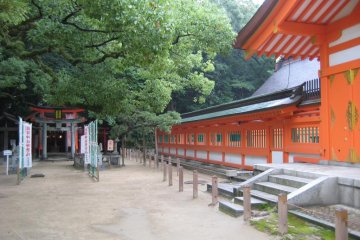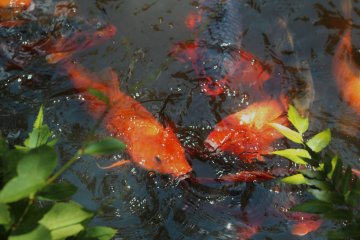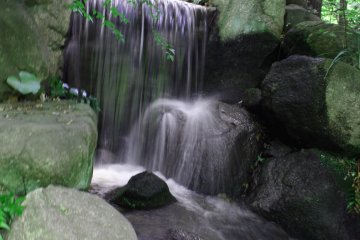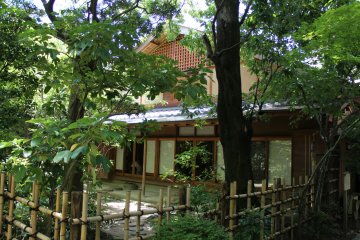The Hakata area of Fukuoka is one of the prefecture's two central areas, the other being the more fashionable and hip Tenjin. Hakata gives off a more serious and businesslike vibe compared to its downtown counterpart. But Hakata is home to its own shopper's paradise: the gargantuan Hakata Station Amu Plaza holds over 230 shops. Take a break from the consumerism and head for the tranquil Rakusui-en Japanese garden and tea ceremony room.
Located near the northern end of Sumiyoshi Shrine is this Japanese garden and tea room. Japanese gardens are distinctive for their simplicity and refined elegance. Rakusui-en offers an escape from the hustle and bustle of the nearby train station and makes for an easy sightseeing trip when in the area. The name Rakusui comes from a Hakata merchant, Chikamasa Shimozawaenemon, an important historical figure in Fukuoka's development.
For a paltry 100-yen admission fee you can spend as much time as you need to soak in the beauty of the gardens. While some may find this garden to be under-whelming, it is important to remember that Japanese gardens are not known for their flash. It is the understated qualities that make the garden so appealing.
Upon entering the garden, take note of the mud walls, which are known as hakatabei. These walls were created in the post-war period reconstruction as directed by Hideyoshi Toyotomi, feudal lord and chief imperial Minister. Inside these walls you'll spot pieces of stones and tiling held together with clay.
Add 50-yen to your admission fee and receive a small bag of koi (carp) food. I highly recommend this as it makes the viewing of the fish more enjoyable, as the colorful koi race towards the food and gulp down it down with such vigor.
Take a seat on one of the red-cloth covered benches and bask in the sweet sounds of the suikinkutsu (a type of musical Japanese garden ornament) and the rush of the nearby waterfall.
Inside the tea ceremony building you will find three classic tatami-mat rooms. Together the rooms can be combined to make a large-scale tea ceremony room. If you are interested in using the tea room facilities, contact the Rakusui-en office (booking charges apply).












